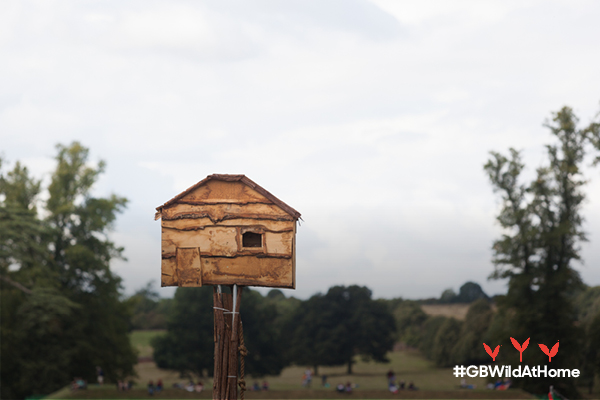Our latest guest blog for our Wild at Home reflections comes from Greenbelt goer and volunteer Katherine Venn. Katherine has helped us curate our literature programme at the festival in the past and, as well as working in publishing, she is a wonderful writer herself. You can follow her on Twitter here.
At some point during lockdown this spring I discovered I was becoming a birdlistener. Confined to my flat and working from home, I was tuning into birdsong.
I think it began with a goldfinch. I’d been noticing a sort of bubbling, twittering sound. I’m familiar with the usual suburban birds we get on our estate: pigeons of course, crows, occasionally a jay, the flocks of rose-necked parakeets that brighten south London, blackbirds. I know what they look and sound like. But this was new, and I wanted to know what it was.
Over e-mail, a friend helped me work out that what I’d heard was a goldfinch’s song. In what felt like magic I saw one for the first time, the next day. With lockdown the estate’s green areas were being mown less often, so the courtyard my flat overlooks was covered with daisies and dandelions – and dandelion clocks, which goldfinches love to eat. But it was as though hearing their song spoke them into being, into seeing, for me.
There’s a geeky, very human, pleasure in connecting up a particular call with a particular bird. And of course birdsong is, to human ears, more than staking claim to territory, or attracting a mate: it is music, and it is beautiful. Gratis, at a time when we’ll take all the beauty that’s on offer. And it teaches you, very quickly, that there’s a lot more going on around you than you realised. There are lot more beings around you than you realised. Simon Barnes’s brilliant book Birdwatching with your Eyes Closed has been an indispensable companion in my lockdown listening. He writes this:
As you listen, you become, in the same deep way, aware of the importance of the many. The more you listen, the more birds there are around, and the more species of bird. You become aware that you are just one part of a living landscape: and that this landscape has many more participants than you had been aware of.
The importance of the many. Those words resonate deeply just now. And the manyness of the world has brought me deep comfort over the past few months: the birds have seen no restriction on their movement, have just got on with their calling and feeding and mating and nesting. Learning birdsong has felt like being given a new sense – the ability to tune in to things that were invisible before, and perhaps still are, though you now know they’re there.
Woven into this discovery of birdsong, this unexpected gift in the unwanted situation of lockdown, and the anxiety and isolation it’s brought with it, is the recollection of something my colleague and friend Brian Draper taught me a few years back, on a guided meditation walk through London: to let birdsong be a reminder of God’s presence in creation. When we tune in, even in our busiest cities, the birds are there. And so, we trust, is God. Even in the face of suffering and, yes, catastrophe.
If learning to hear birdsong has been the surprising discovery of beauty, interconnectedness, comfort – I’m wondering if there’s a way to tune in to God’s presence more deeply and what that might bring. What songs – of joy, of suffering, of comfort – might I hear? Might I discover, when I’m paying attention, that God is closer and more present than I realise; like the blackcap with its exquisite song – hidden in thick tree cover, yet absolutely present as I sit inside, working? And if I am to take our interconnectedness seriously, the command to love my neighbour seriously, I first need to discover my neighbour’s existence in the first place – as I did the goldfinch, who was no doubt there all along. Who and what else am I not paying attention to, which has been there all along? Recent weeks have given severely challenging answers to those questions.
Once threatened by their own beauty – caged for their song, stuffed for their red and gold feathers – goldfinches are now common again, feasting on the dandelion clocks on our unmown green spaces this spring. As I listen to them now they are a continual reminder to me of Jesus’ words to his disciples, as he left them: that though we will know trouble, he is with us, always.


